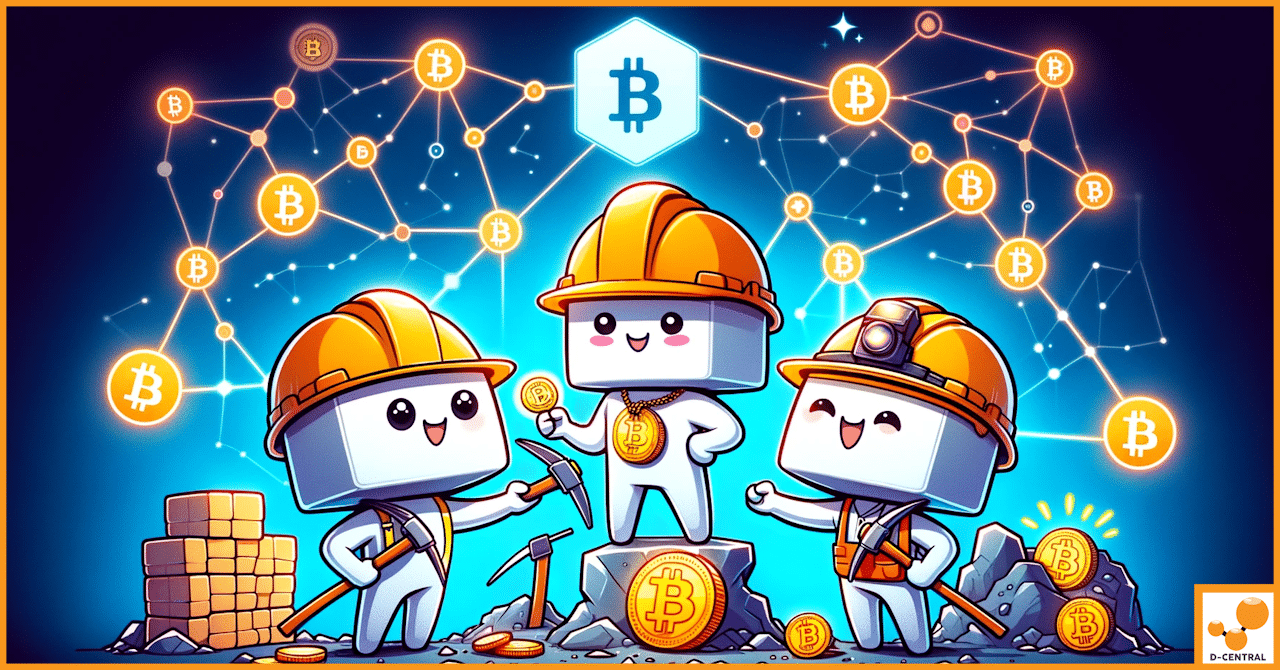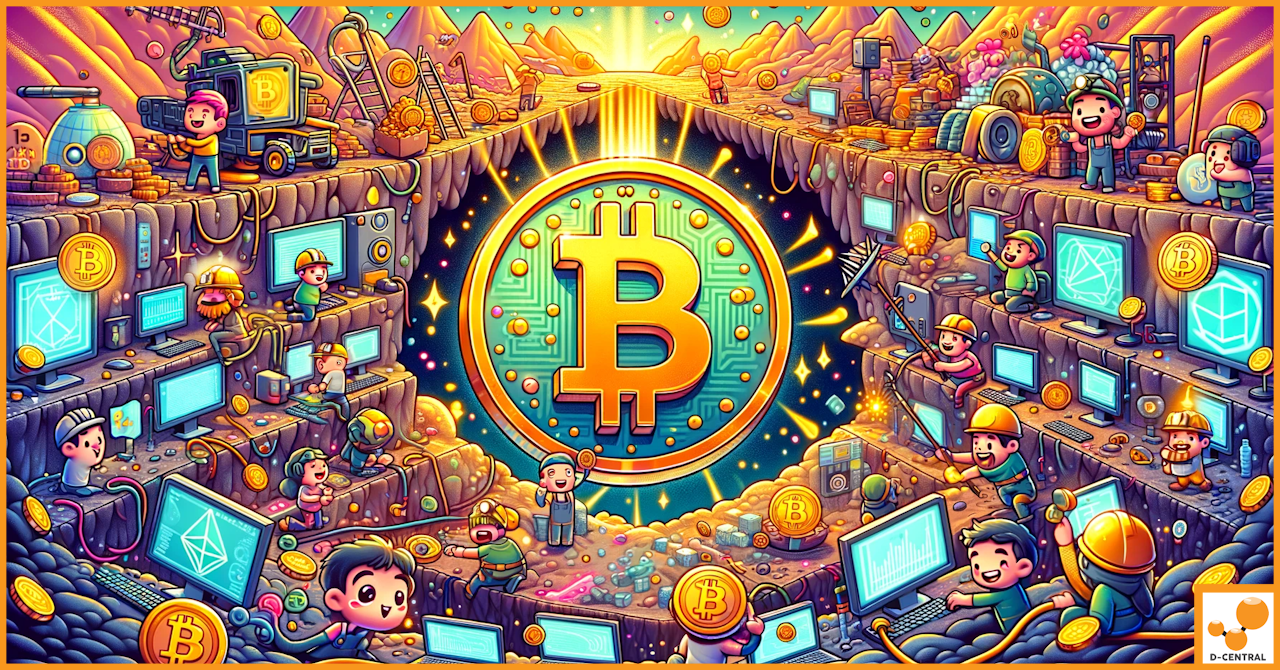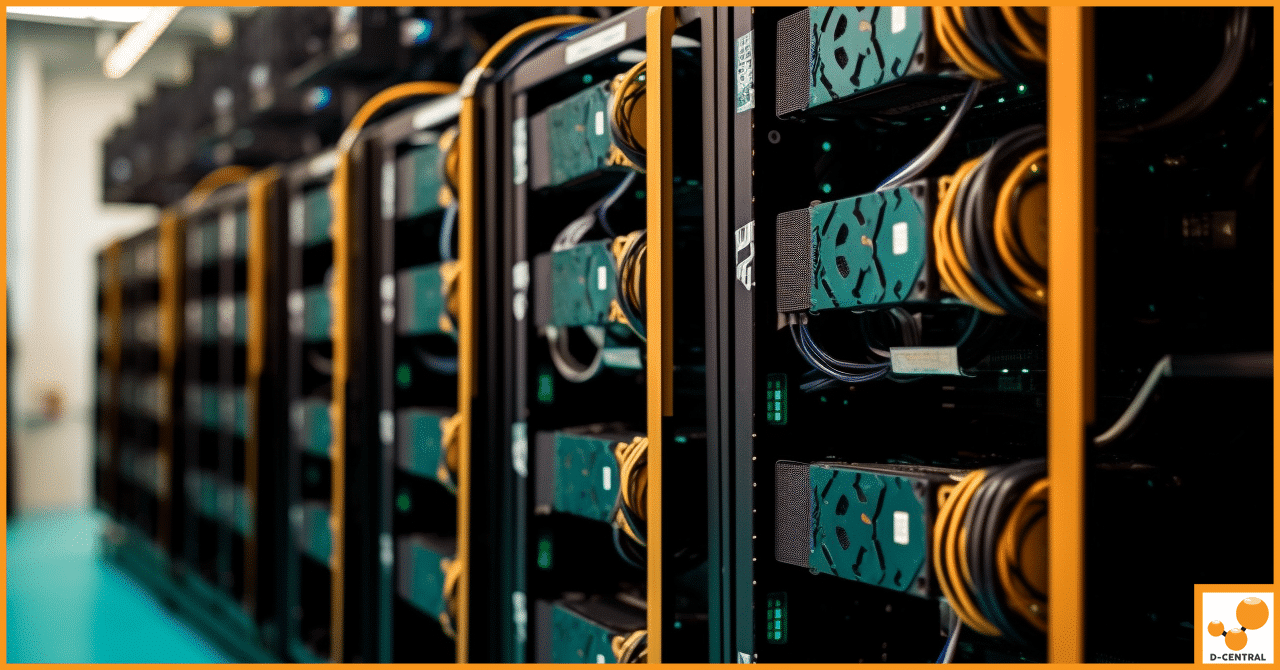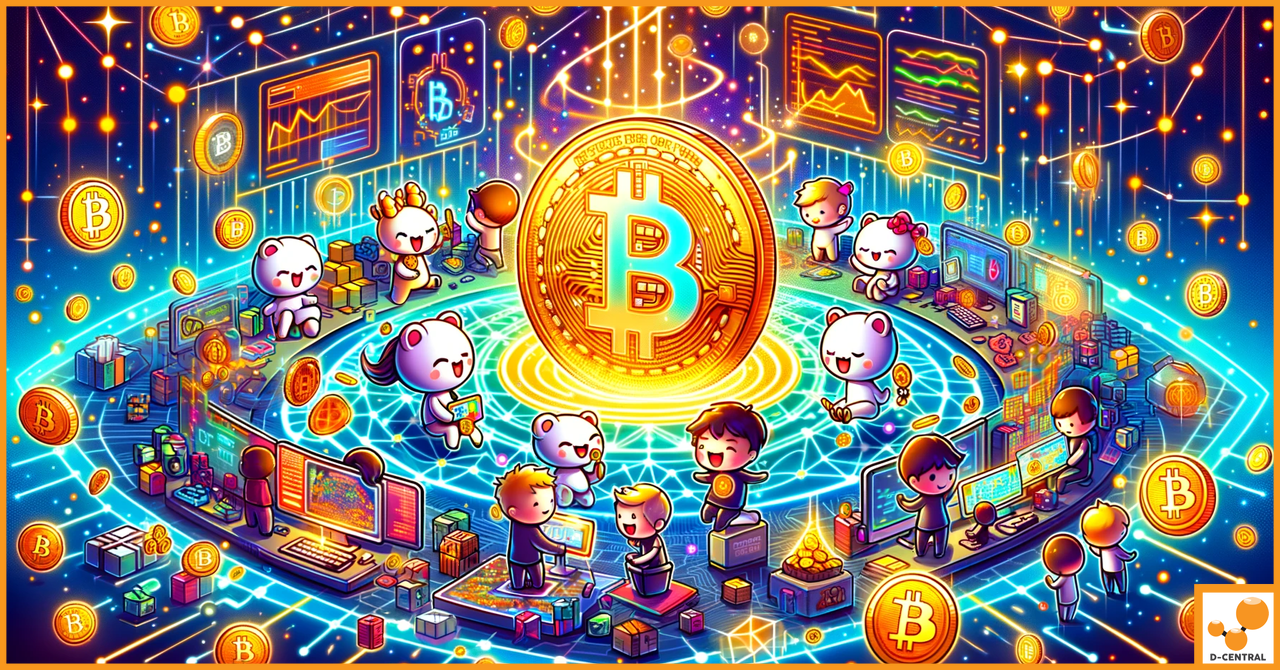
Empowering Self-Sovereignty: The Synergy of Bitcoin Nodes and Miners
In the ever-evolving world of digital currencies, Bitcoin stands out as a beacon of decentralization, challenging traditional financial systems and
4479 Desserte Nord Autoroute 440, Laval, QC H7P 6E2

In the ever-evolving landscape of digital finance, Bitcoin stands out as a pioneering force, having introduced the world to the concept of cryptocurrency. Created by an unknown individual or group of people under the pseudonym Satoshi Nakamoto, Bitcoin emerged in 2009, not just as a new form of currency but as a revolutionary technology that promised a decentralized form of money. Unlike traditional currencies controlled by governments and financial institutions, Bitcoin operates on a peer-to-peer network, free from central authority.
At the heart of Bitcoin’s functionality and sustainability is the process known as mining. Bitcoin mining is more than just the creation of new bitcoins; it is the backbone of the entire Bitcoin network. Miners use powerful computers to solve complex mathematical problems – a process that validates and secures transactions on the blockchain, Bitcoin’s underlying technology. When a miner successfully solves a cryptographic puzzle, they add a new block of transactions to the blockchain. In return for their crucial role in maintaining and securing the digital ledger, miners are rewarded with newly minted bitcoins, known as the block reward.
This block reward, which includes both the new bitcoins created with each block and the transaction fees paid by users, is not just an incentive for miners. It is an integral part of Bitcoin’s design, playing a critical role in the introduction of new bitcoins into the system and ensuring the network’s security and integrity. As we delve deeper into the world of Bitcoin mining and its block rewards, we uncover a complex interplay of technology, economics, and cryptography that underpins the world’s first cryptocurrency.
A Bitcoin mining block reward is the incentive provided to miners for validating and adding new transactions to the Bitcoin blockchain. This reward comprises two main components:
The evolution of block rewards is a tale of Bitcoin’s journey towards a deflationary monetary system. Initially set at 50 BTC per block in 2009, the block reward halved for the first time in 2012, reducing to 25 BTC. This halving event occurs every 210,000 blocks, roughly every four years, as a mechanism to control inflation and mimic the scarcity-driven appreciation often seen in precious metals like gold.
This progressive reduction in block rewards not only controls the rate at which new bitcoins are introduced into the system but also has broader implications on the miners’ incentives, network security, and the overall economics of Bitcoin mining. The reduction in block rewards is counterbalanced by the rise in the value of Bitcoin and the increasing transaction fees, ensuring that mining remains a lucrative process for maintaining the decentralized ledger.
As we approach the next halving, anticipated in 2024, the dynamics of block rewards and their impact on the Bitcoin ecosystem continue to be a subject of interest and speculation within the cryptocurrency community.
Bitcoin’s halving process is a fundamental aspect of its design, serving as an automatic, self-regulating mechanism to control the supply of new bitcoins into the market and the rate of their introduction. The halving event occurs every 210,000 blocks, which, given the average time it takes to mine a block (approximately 10 minutes), happens roughly every four years.
During each halving event, the number of bitcoins that miners receive as a block reward is cut in half. This means that while a miner could earn 50 BTC for adding a block to the blockchain at the inception of Bitcoin in 2009, this reward was reduced to 25 BTC in 2012, then to 12.5 BTC in 2016, and most recently to 6.25 BTC in the 2020 halving. The next halving, expected in 2024, will reduce the block reward to 3.125 BTC.
Overall, the halving process is a crucial element in Bitcoin’s design, ensuring a controlled and predictable issuance of new bitcoins. This mechanism not only impacts the miners’ economics but also plays a significant role in the broader dynamics of the cryptocurrency market, influencing investor behavior and perceptions of Bitcoin’s value.
Mining difficulty in the Bitcoin network is a critical factor that determines how challenging it is for miners to find a new block. This difficulty is dynamically adjusted to maintain the network’s stability and efficiency. The core purpose of these adjustments is to ensure that the time taken to mine each block remains roughly around 10 minutes, regardless of the total computing power within the network.
Every 2,016 blocks, or approximately every two weeks, the Bitcoin protocol automatically adjusts the mining difficulty. This adjustment is based on the total hashing power of the network and the time it took to mine the previous 2,016 blocks. If these blocks were mined too quickly (in less than two weeks), the difficulty increases, making it harder to mine new blocks. Conversely, if it took more than two weeks, the difficulty decreases, making mining easier. This self-regulating mechanism is vital for keeping block times consistent and ensuring the network’s functionality and security.
Block rewards play a pivotal role in securing the Bitcoin network and encouraging miner participation. By offering block rewards (comprising both the block subsidy and transaction fees), the Bitcoin network incentivizes miners to contribute their computational power to validate transactions and add new blocks to the blockchain. This process is not only crucial for transaction verification but also for the overall security of the network.
As miners use their computational resources to solve cryptographic puzzles, they help to secure the network against potential attacks, such as double-spending or 51% attacks. The more decentralized the mining power in the network, the more secure the blockchain becomes. This security is underpinned by the economic incentives provided by block rewards, which motivate miners to continuously contribute to the network’s hashing power.
However, as the block reward diminishes due to halving events, there are concerns about whether transaction fees alone will be sufficient to incentivize miners in the long term. This concern is particularly relevant as the fixed supply cap of 21 million bitcoins is approached and the block subsidies cease. The long-term security and stability of the network may depend on the continued participation of miners and the viability of their operations in a landscape where block rewards are primarily made up of transaction fees.
In summary, mining difficulty adjustments and block rewards are integral to the functionality and security of the Bitcoin network. They ensure that the network operates smoothly, blocks are generated consistently, and the blockchain remains secure and decentralized.
Block rewards have a significant influence on Bitcoin’s economic ecosystem and its market dynamics. The periodic halving of block rewards, which reduces the rate at which new bitcoins are created, plays a pivotal role in Bitcoin’s supply mechanics. By decreasing the influx of new coins, each halving event heightens Bitcoin’s scarcity, which can potentially drive up its price if demand remains steady or increases.
This aspect of Bitcoin’s design mimics the scarcity-driven appreciation found in natural resources. As the supply of new bitcoins slows down, the existing supply becomes more valuable if the demand for Bitcoin remains the same or grows. This economic principle often leads to speculation and bullish sentiment in the market around the time of halving events. However, it’s important to note that Bitcoin’s price is influenced by a myriad of factors, and while halvings are significant, they are not the sole determinants of price movements.
Bitcoin halving events tend to garner significant attention from investors, traders, and market analysts. Often, these events are accompanied by a surge in optimism and positive market sentiment, with many investors anticipating an increase in Bitcoin’s value post-halving. This optimism can be attributed to the expected reduction in supply and the historical price performance following previous halvings.
However, investor sentiment during these periods is not always uniformly positive. The market can experience heightened volatility, with varying degrees of speculation, excitement, and uncertainty. Some investors might be concerned about the potential impacts on miner profitability and network security, leading to a mixed reaction in the market. This phenomenon can result in short-term price fluctuations, making the market particularly reactive in the periods leading up to and immediately following a halving event.
In summary, block rewards, and particularly their halving, have profound implications for Bitcoin’s economic model and the broader cryptocurrency market. They affect supply dynamics, influence investor sentiment, and play a role in shaping market trends and behaviors. As such, understanding the implications of block rewards is crucial for those participating in or analyzing the cryptocurrency market.
In the Bitcoin network, miners play a crucial role as they are responsible for validating new transactions and creating new blocks in the blockchain. This process involves solving complex cryptographic puzzles, which requires significant computational power. Miners’ primary motivation to contribute to this network activity is the block reward, which includes both the newly minted bitcoins (block subsidy) and transaction fees from the transactions included in the new block.
The block reward serves as the primary revenue source for miners. Initially, the block subsidy constituted a significant portion of this reward, but as the number of new bitcoins per block decreases due to halving events, transaction fees are becoming an increasingly important component of miners’ total revenue.
The evolution of Bitcoin mining equipment is a testament to the increasing complexity and competitive nature of Bitcoin mining. In the early days of Bitcoin, mining was possible using simple CPUs found in most home computers. However, as the network grew and the difficulty of mining increased, more powerful GPUs, typically used in gaming computers, became the norm.
The continuous pursuit of efficiency and profitability in mining led to the development of Application-Specific Integrated Circuits (ASICs). ASICs are specialized hardware designed exclusively for Bitcoin mining, offering a significant advantage in terms of speed and energy efficiency compared to CPUs and GPUs. The advent of ASICs transformed Bitcoin mining into a more industrialized process, dominated by players who could afford these advanced machines.
The progression to ASICs and the increasing mining difficulty have had profound implications on the Bitcoin mining landscape. There has been a trend towards centralization, with large-scale mining operations becoming increasingly dominant. This shift raises concerns about the decentralized nature of the Bitcoin network, as smaller, independent miners find it more challenging to compete with these larger entities. The need for substantial upfront investment in efficient mining equipment and the ongoing costs of electricity and maintenance further contribute to this centralization.
Moreover, the advancement of mining technology and its associated costs have significant environmental implications, contributing to the ongoing debate about Bitcoin’s environmental impact. The energy-intensive nature of mining, especially with high-powered ASICs, adds to the global conversation about sustainable practices in cryptocurrency mining.
As we reflect upon the multifaceted realm of Bitcoin mining and block rewards, it’s evident that these components are not just mere cogs in the cryptocurrency machine but are, in fact, pivotal elements that sustain and define the very essence of Bitcoin.
Looking towards the future, the landscape of Bitcoin mining and block rewards is poised for further evolution. As the network inches closer to its final halving event and the ultimate cap of 21 million bitcoins, the ecosystem is likely to undergo significant changes. These changes will challenge the existing paradigms of mining profitability, network security, and market dynamics.
In this ever-changing landscape, the adaptability and resilience of Bitcoin’s network will be put to the test. The future of Bitcoin mining and block rewards is not just a matter of technological advancement but also a reflection of the broader economic, environmental, and societal factors that influence the world of cryptocurrencies. As we venture further into this digital era, Bitcoin continues to offer a fascinating glimpse into the potential and challenges of decentralized finance.
What is Bitcoin mining?
Bitcoin mining is the process of using powerful computers to solve complex mathematical problems which validate and secure transactions on the blockchain, the technology behind Bitcoin. Successful miners receive a block reward for their contributions to the network.
What is a Bitcoin mining block reward?
A Bitcoin mining block reward is an incentive for miners to support the network. It consists of two parts: the block subsidy (new bitcoins created with each block) and transaction fees (paid by users for transaction inclusion in a block).
How does the Bitcoin block reward work?
Initially set at 50 BTC per block, the reward halves approximately every four years. As of the last halving in 2020, the block reward is at 6.25 BTC. The block reward incentivizes miners to process transactions and secure the network.
What is the Bitcoin Halving?
The Bitcoin Halving is an event that occurs every 210,000 blocks, about every four years, where the block subsidy component of the mining reward is halved, reducing the rate at which new bitcoins are released.
Why does Bitcoin have a halving process?
Bitcoin’s halving process controls inflation by reducing the pace at which new bitcoins are created, ensuring that the total supply doesn’t exceed 21 million coins. It also mimics the scarcity of resources like gold, potentially increasing Bitcoin’s value over time.
How do halving events affect Bitcoin miners?
Halving events reduce the block subsidy, which could lower miner revenue. However, if the value of Bitcoin increases, along with transaction fees, mining can remain profitable.
What is mining difficulty in the Bitcoin network?
Mining difficulty is a measure of how hard it is to find a new block in the Bitcoin blockchain. It adjusts every 2016 blocks to ensure a consistent block time of about 10 minutes, regardless of total network hashing power.
How does the evolution of mining equipment affect the Bitcoin network?
The evolution of mining equipment, from CPUs to specialized ASICs, has made Bitcoin mining more efficient but also more industrialized and centralized, raising concerns about network decentralization and environmental impact.
What are the market implications of Bitcoin block rewards?
Block rewards influence Bitcoin’s supply and demand, market dynamics, and investor sentiment. Halving events are particularly notable, as they can lead to increased scarcity and affect Bitcoin’s price and the cryptocurrency market’s behaviors.
How will Bitcoin mining change in the future?
As the network approaches the final bitcoins being mined and the block rewards become primarily transaction fees, the mining industry may face challenges in profitability and network security, leading to changes in the mining landscape and market dynamics.
DISCLAIMER: D-Central Technologies and its associated content, including this blog, do not serve as financial advisors or official investment advisors. The insights and opinions shared here or by any guests featured in our content are provided purely for informational and educational purposes. Such communications should not be interpreted as financial, investment, legal, tax, or any form of specific advice. We are committed to advancing the knowledge and understanding of Bitcoin and its potential impact on society. However, we urge our community to proceed with caution and informed judgment in all related endeavors.
Related Posts

In the ever-evolving world of digital currencies, Bitcoin stands out as a beacon of decentralization, challenging traditional financial systems and

As the Bitcoin mining landscape becomes increasingly competitive, a miner’s success hinges not only on their ability to procure cutting-edge

In the annals of financial history, few innovations have sparked as much intrigue and debate as Bitcoin. Conceived in the